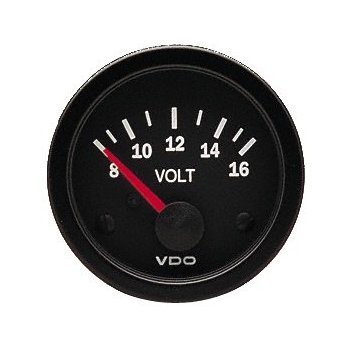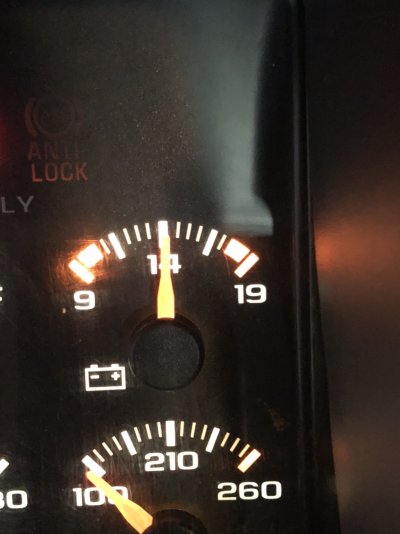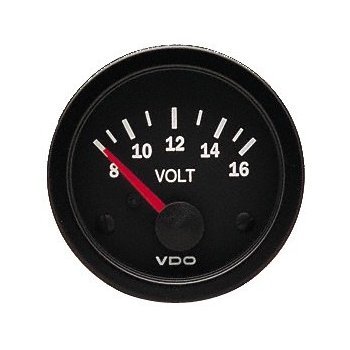I have two of these trucks, a 98 Z71 and a 98 Tahoe, so it helps being able to compare.
This is the dash gauge on the truck with blower on high, hazards on and all accessories on, including rear defrost.

Corresponding alternator voltage is 14.39V, so the gauge is reasonably accurate considering that the tick marks are not intuitive.
If we are to assume some inkling of linearity, then the mark halfway between 9 and 14 would be 11.5, the other one being 16.5. I kind of call BS on the accuracy at that point.
This is what a real voltage gauge would look like. You would be able to tell, at a glance, what the voltage value is without resorting to doing a math problem in your head.

Anyways, back on topic.
The truck’s gauge does not fluctuate with the turn signal. It has a one year old battery, five year old alternator and original battery cables.
Now the Tahoe is where I see it quiver a little. It has a new battery, new alternator and new cables. Here’s the gauge on it with blower on high and with all lights, hazards, rear defrost and accessories on. Corresponding alternator voltage is 14.69V.

With the hazards, lights, defrost and blower on high, it quivers a little - no more than one minor tick mark, whatever that span is supposed to represent on the gauge. I hear no variance with the blower speed which is drawing full battery voltage when on high. Alternator output during all of that varies by 2 to 4/100V on my meter, so I think that is ok given the varied system demand when the signals are on.
For me, I think the cluster is the issue.
Once you guys thaw out, putting a meter on your alternator would be the next step. You may have something pulling too much. Check the drop across the alternator cable first. I believe that anything more than 0.1V is an issue.
I’d turn everything off and, while watching the voltage at the battery, turn accessories on one at a time to see if you spot the culprit.
Sent from my iPhone using Tapatalk







